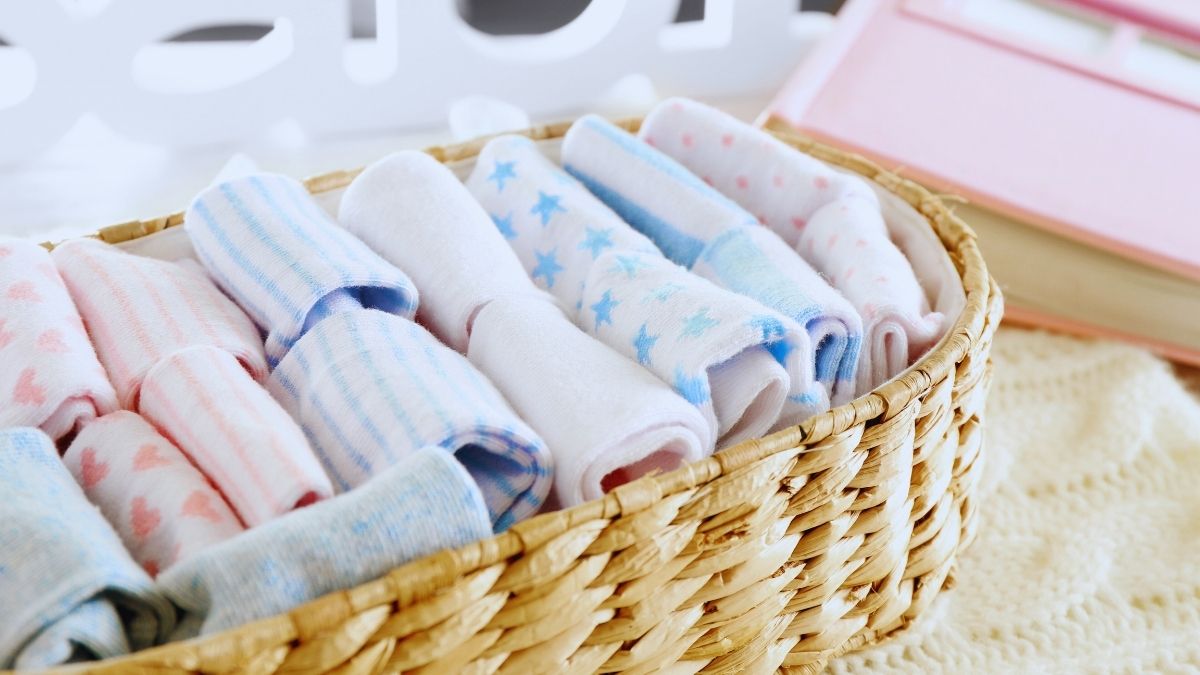Last Updated on May 9, 2025 by Kravelv Spiegel
When you bring your newborn home, you quickly realize just how much laundry a tiny human can generate. From spit-up-soaked onesies to diaper mishaps and food spills, baby clothes go through a lot. But washing baby clothes isn’t just about tossing them into the machine — it’s about protecting your baby’s sensitive skin while keeping their outfits soft, clean, and safe.
If you’re feeling overwhelmed by all those tiny socks and bodysuits, don’t worry. Here are the essential baby laundry tips every new parent should know.
1. Always Wash New Baby Clothes Before Use
Baby clothes might look clean and fresh right off the rack, but they often carry residues from the manufacturing and shipping process, including dyes, chemicals, and dust. Before dressing your newborn, make sure to wash all clothes, blankets, bibs, and towels.
A gentle wash removes any irritants and ensures that the fabric is safe for your baby’s delicate skin. It’s best to choose a fragrance-free, hypoallergenic detergent designed specifically for babies for this first wash — and every wash after.
2. Choose the Right Detergent
Selecting the proper detergent is crucial. Regular laundry detergents often contain fragrances, dyes, and harsh chemicals that can cause skin irritation or allergic reactions in babies. Look for:
- Fragrance-free
- Dye-free
- Hypoallergenic
- Dermatologist-tested products
Brands that market themselves as “baby-safe” are a good starting point, but always read the label to be sure.
If your baby shows signs of sensitivity (like rashes or redness), you may need to switch to an even milder detergent or consult your pediatrician for recommendations.
3. Separate Baby Clothes from Family Laundry
It might be tempting to throw your baby’s tiny clothes in with the family’s laundry, but it’s best to wash baby items separately, especially in the early months.
This prevents cross-contamination from dirtier adult clothes and protects delicate fabrics from rougher materials like denim or items with zippers and buttons.
As your baby grows and their skin becomes less sensitive, you may feel comfortable combining loads — but starting off separately is the safest choice.
4. Pre-Treat Stains Immediately
Baby stains are inevitable — milk, spit-up, food, and diaper leaks happen often. The key to managing them is acting fast:
- Blot (don’t rub) stains gently to lift as much as possible.
- Rinse with cold water immediately to prevent stains from setting.
- Apply a baby-safe stain remover or mild soap before tossing the item in the wash.
Stains that sit for too long can become permanent, so it’s worth keeping a stain remover stick or spray handy near your laundry basket.
If you need a deeper guide on treating stubborn spots, you can check our detailed article on how to wash baby clothes, which includes stain-specific solutions.
5. Choose the Right Washing Settings
When it’s time to do the actual washing, make sure you adjust your machine settings:
- Use a gentle or delicate cycle to protect soft fabrics.
- Select cold or warm water rather than hot, which can shrink clothes and fade colors.
- Add an extra rinse cycle to ensure no detergent residue remains on the clothes.
If you’re washing cloth diapers, check specific instructions — these often require hot water for proper sanitation.
6. Be Careful with Fabric Softeners
While fabric softeners leave clothes feeling soft and smelling sweet, they’re not ideal for baby clothing. Many contain chemicals that can irritate sensitive skin, and they may reduce the flame resistance of certain fabrics, like sleepwear.
If you feel you must use a softener, opt for a baby-friendly version or consider natural alternatives like adding a little white vinegar to the rinse cycle.
7. Dry with Care
Drying baby clothes properly is just as important as washing them:
- Air-dry when possible to maintain softness and prevent shrinking.
- Use a low-heat setting if using a dryer.
- Avoid over-drying, which can make fabrics rough and uncomfortable.
Sun-drying is a fantastic natural option — not only does it dry clothes gently, but the sun’s UV rays also help to naturally bleach out stubborn stains.
8. Store Clean Baby Clothes Properly
Once your baby’s clothes are fresh and clean, store them properly to keep them that way. Make sure clothes are completely dry before folding and putting them away. Damp clothes can encourage mold and mildew, which are harmful to your baby’s health.
Store clothes in a clean, dry dresser or closet and avoid plastic containers unless they are specifically designed for breathable storage.
Final thoughts
Managing baby laundry isn’t just another chore — it’s part of caring for your baby’s health and comfort. By using a gentle detergent, treating stains promptly, and washing clothes carefully, you can keep your little one’s wardrobe fresh, soft, and safe for their sensitive skin.
Remember, knowing how to wash baby clothes correctly gives you a solid foundation to make laundry easier and more efficient. With a little practice, you’ll become a pro — and spend less time worrying about laundry and more time cuddling your sweet baby!

